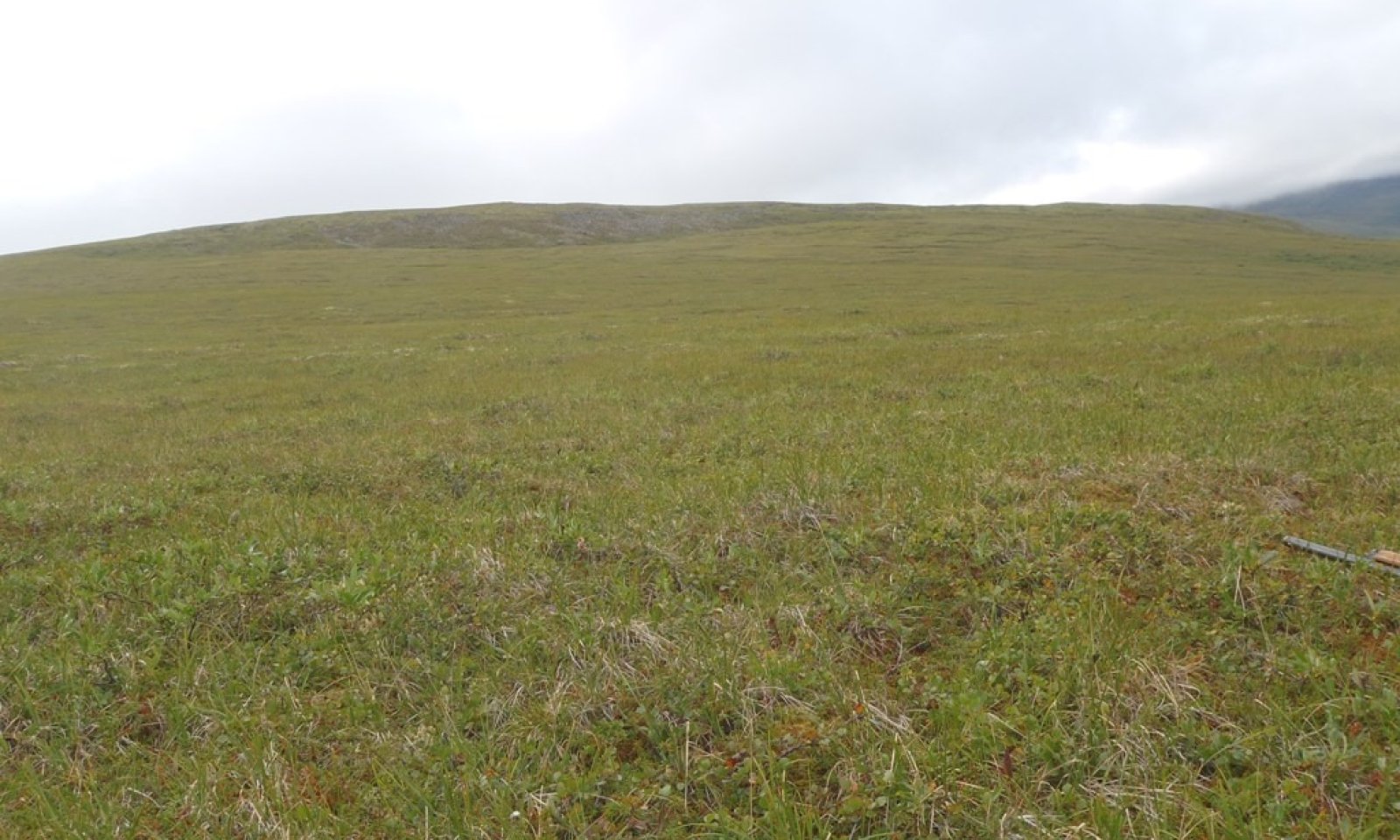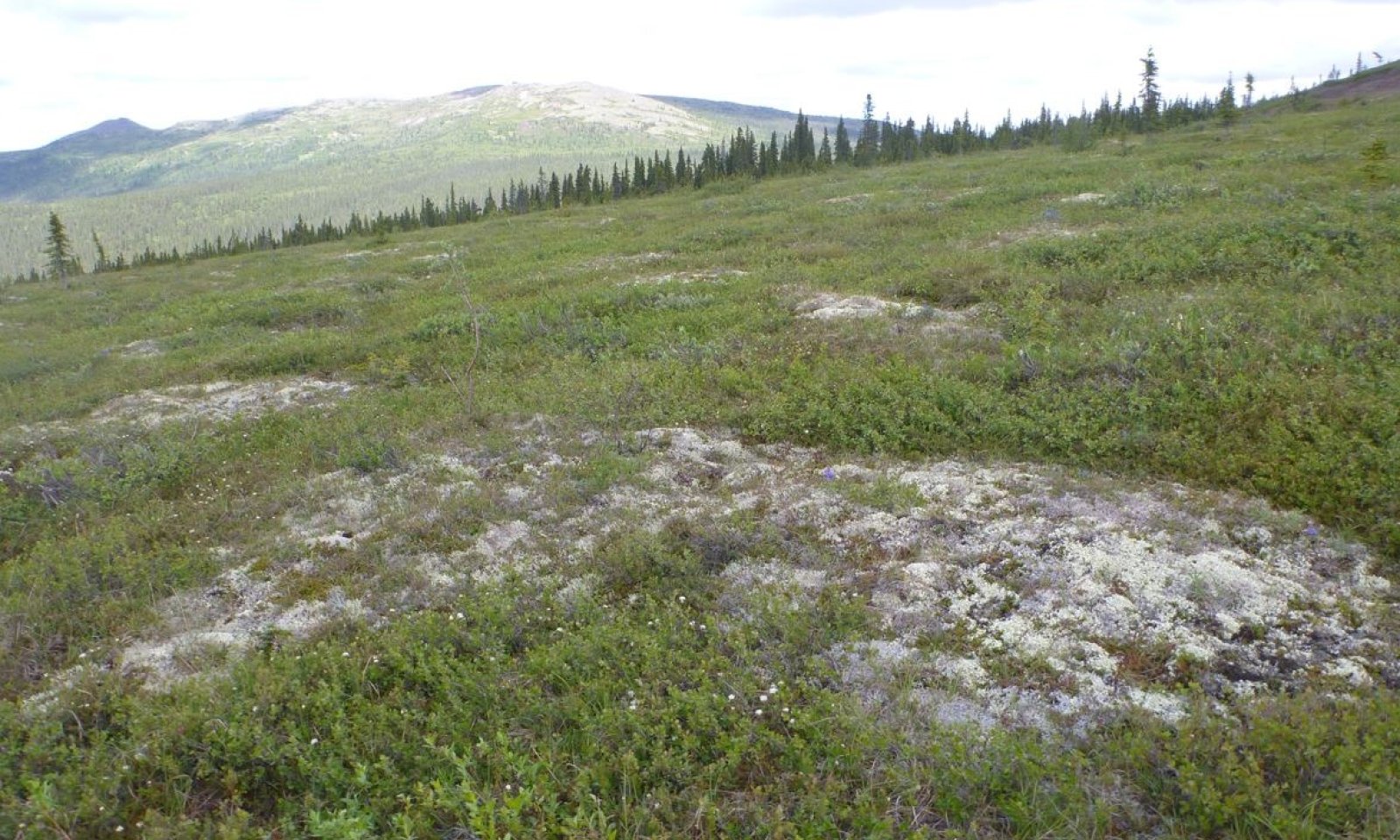
Alpine Dwarf Scrub Gravelly Frozen Slopes
Scenario model
Current ecosystem state
Select a state
Management practices/drivers
Select a transition or restoration pathway
-
Transition T1A
Formation of non-sorted circles
More details -
No transition or restoration pathway between the selected states has been described
Target ecosystem state
Select a state
Description
The reference plant community is ericaceous dwarf scrub (Viereck et al. 1992). There are two plant communities in the reference state related to fire.
Solifluction is a process associated with this state but does not happen to a degree resulting in a mosaic of vegetation. Solifluction is the slow, viscous downslope flow of water-saturated soil (Shoeneberger and Wysocki 2017). This process is most active for this site during spring thaw where the upper band of soil material slips on a seasonally frozen layer. Solifluction is a common process associated with several ecological sites in this area and this site can at times have small solifluction lobes. Since these small solifluction lobes are uncommon and do not result in a vegetation mosaic, no alternative solifluction state was developed for this site (see R231XY113AK for a site that does have this alternate state).
Submodel
State 2
Non-sorted Circle State



Description
Non-sorted circles are a type of patterned ground. On gentle slopes, these patterned features are roughly circular and as steepness increases these features become slightly elongated. In this area, the diameter of non-sorted circles commonly ranged from 1.5 to 10 feet and are mounded above the surrounding vegetation. These circles are considered non-sorted due to an absence of coarse rock fragments on their borders (Schoeneberger and Wysocki 2017). For this site, these non-sorted patterned ground features form through the process of cryoturbation.
Cryoturbation is a collective term used to describe all soil movements due to frost action, characterized by folded, broken and dislocated beds and lenses of unconsolidated deposits (Schoeneberger and Wysocki 2017). In this instance, these patterned ground features result through differential heave of frost susceptible material resulting in mounds (Schoeneberger and Wysocki 2017). During active periods of cryoturbation, freshly churned up mineral soil and rock fragments were commonly observed on mounded surfaces. The formation of these non-sorted circles leads to a distinct mosaic of vegetation.
This vegetation mosaic has two distinct plant communities that are associated with different positions on or adjacent to the non-sorted circle. The first plant community occurs in adjacent areas that have not yet formed these non-sorted circles or is the community that occurs between the non-sorted circles (community 2.1). This community generally resembles the reference state vegetation. The second plant community occurs on the non-sorted circle (community 2.2), which supports a lichen dominant plant community. When compared to community 2.1 soils, the non-sorted circle soils are much drier and have much less organic matter.
Submodel
Model keys
Briefcase
Add ecological sites and Major Land Resource Areas to your briefcase by clicking on the briefcase (![]() ) icon wherever it occurs. Drag and drop items to reorder. Cookies are used to store briefcase items between browsing sessions. Because of this, the number of items that can be added to your briefcase is limited, and briefcase items added on one device and browser cannot be accessed from another device or browser. Users who do not wish to place cookies on their devices should not use the briefcase tool. Briefcase cookies serve no other purpose than described here and are deleted whenever browsing history is cleared.
) icon wherever it occurs. Drag and drop items to reorder. Cookies are used to store briefcase items between browsing sessions. Because of this, the number of items that can be added to your briefcase is limited, and briefcase items added on one device and browser cannot be accessed from another device or browser. Users who do not wish to place cookies on their devices should not use the briefcase tool. Briefcase cookies serve no other purpose than described here and are deleted whenever browsing history is cleared.
Ecological sites
Major Land Resource Areas
The Ecosystem Dynamics Interpretive Tool is an information system framework developed by the USDA-ARS Jornada Experimental Range, USDA Natural Resources Conservation Service, and New Mexico State University.

